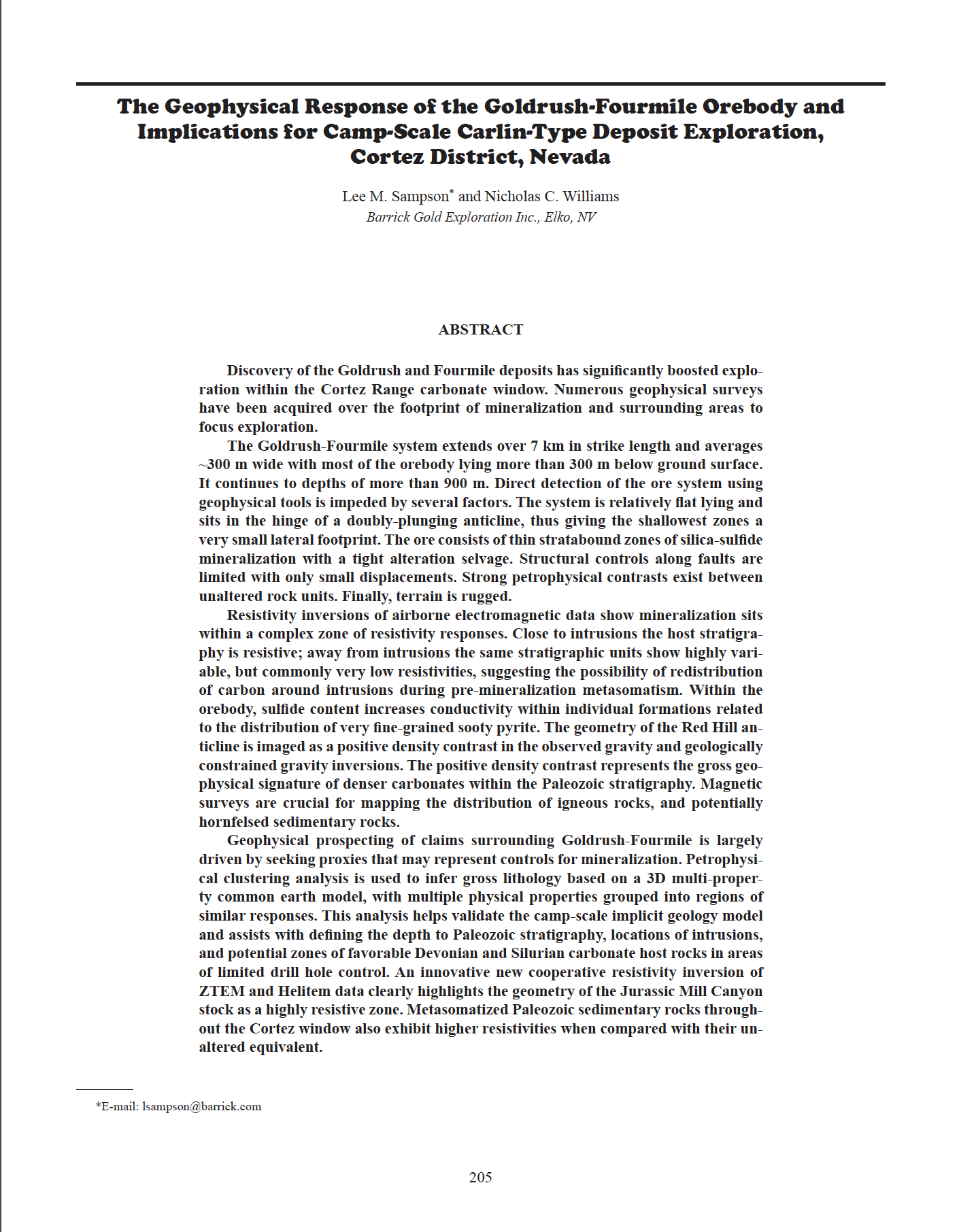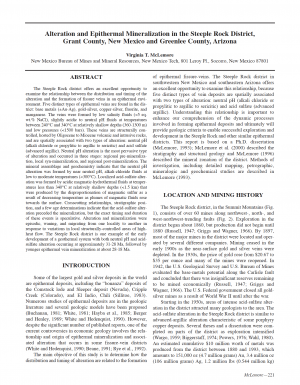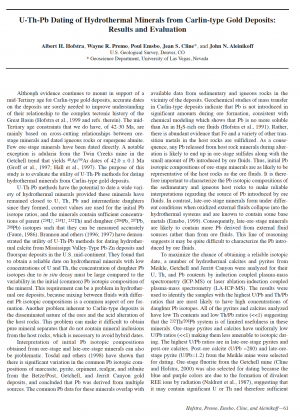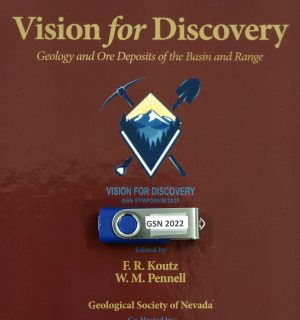$10.00
Discovery of the Goldrush and Fourmile deposits has significantly boosted exploration
within the Cortez Range carbonate window. Numerous geophysical surveys
have been acquired over the footprint of mineralization and surrounding areas to
focus exploration.
The Goldrush-Fourmile system extends over 7 km in strike length and averages
~300 m wide with most of the orebody lying more than 300 m below ground surface.
It continues to depths of more than 900 m. Direct detection of the ore system using
geophysical tools is impeded by several factors. The system is relatively flat lying and
sits in the hinge of a doubly-plunging anticline, thus giving the shallowest zones a
very small lateral footprint. The ore consists of thin stratabound zones of silica-sulfide
mineralization with a tight alteration selvage. Structural controls along faults are
limited with only small displacements. Strong petrophysical contrasts exist between
unaltered rock units. Finally, terrain is rugged.
Resistivity inversions of airborne electromagnetic data show mineralization sits
within a complex zone of resistivity responses. Close to intrusions the host stratigraphy
is resistive; away from intrusions the same stratigraphic units show highly variable,
but commonly very low resistivities, suggesting the possibility of redistribution
of carbon around intrusions during pre-mineralization metasomatism. Within the
orebody, sulfide content increases conductivity within individual formations related
to the distribution of very fine-grained sooty pyrite. The geometry of the Red Hill anticline
is imaged as a positive density contrast in the observed gravity and geologically
constrained gravity inversions. The positive density contrast represents the gross geophysical
signature of denser carbonates within the Paleozoic stratigraphy. Magnetic
surveys are crucial for mapping the distribution of igneous rocks, and potentially
hornfelsed sedimentary rocks.
Geophysical prospecting of claims surrounding Goldrush-Fourmile is largely
driven by seeking proxies that may represent controls for mineralization. Petrophysical
clustering analysis is used to infer gross lithology based on a 3D multi-property
common earth model, with multiple physical properties grouped into regions of
similar responses. This analysis helps validate the camp-scale implicit geology model
and assists with defining the depth to Paleozoic stratigraphy, locations of intrusions,
and potential zones of favorable Devonian and Silurian carbonate host rocks in areas
of limited drill hole control. An innovative new cooperative resistivity inversion of
ZTEM and Helitem data clearly highlights the geometry of the Jurassic Mill Canyon
stock as a highly resistive zone. Metasomatized Paleozoic sedimentary rocks throughout
the Cortez window also exhibit higher resistivities when compared with their unaltered
equivalent.
Despite the challenges associated with exploring for deeply buried Carlin mineralization,
applying innovative geophysical tools, tuned to assess specific geological
questions and combined with best-practice geological and geochemical modelling, is
helping drive exploration for additional Carlin-type mineralization across the Cortez
district.
Keywords: magnetic, resistivity, gravity, conductivity, inversions, clustering analysis





